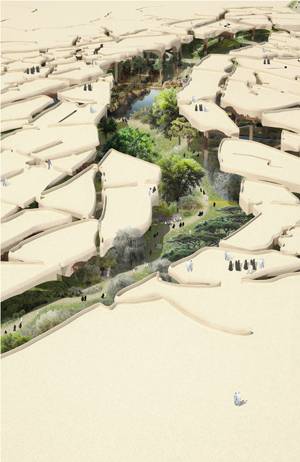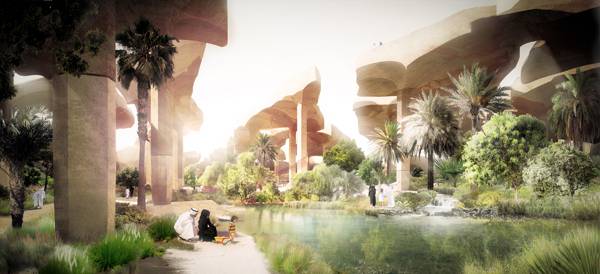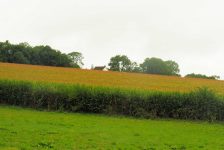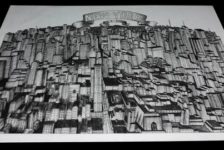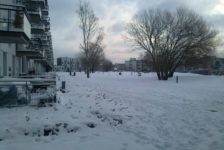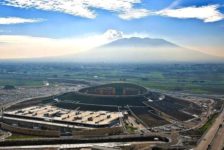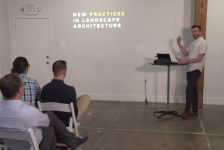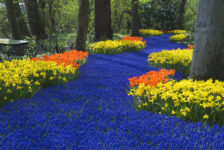Al Fayah Park turns heads as Heatherwick Studios plan to create a state of the art lush park in the desert! Landscape design is getting stronger as the days are passing by. Each architect and urban planner is now aware that there is a need for landscape design when we are talking about any land use and the improvement of the city. But, what is stronger is the misconception of sustainability and landscape design. If we analyze the actual status of our cities and the green areas that are within them, we will discover that the reason why landscape design, architecture and urbanism are falling in their purpose is because they follow “old models” of design. In most of the cases, the parks are designed with a goal of creating an English garden. In other situations, client, gardener and architect decide to use big platforms of grass, based on the idea that using grass is more sustainable than proposing other options. These are only two examples of common mistakes architects and clients made in the name of sustainability.
But, this situation is changing and the Al Fayah Park, designed by Heatherwick Studio, is a perfect example of how a landscape project can be successful without using the established canons. In the words of Thomas Heatherwick, the Al Fayah Park is“not a conventional building and it’s not a conventional park. It’s part architecture, part landscape, part cultural destination. It even includes a library.” The main scope of the park’s design is to create an evergreen 125,000 square meter park inside the Abu Dhabi’s desert. Maybe, when we relate Abu Dhabi’s desert with the idea of a park, we think about a project that will affect the natural context of the site instead of improving it. But the architectural and landscape design creates a park that shows its respect to the natural landscape of Abu Dhabi, demonstrates use of modern sustainability concepts and considers a real program of activities to develop in the park. Al Fayah Park Design First of all, the design of the park was only possible by abstracting the irregular patterns presented in the desert’s surface. The design of the canopies, that brings shadow and shelter for the visitors, features a cracked, sabkha, or salt flat landscape. The irregular forms are located 20 meters above ground level, thanks to the use of special columns; their upper parts perform as forums for people to meet. From the inside of the park the canopies make up an organic cathedral ceiling that allows for dappled sunlight to filter through to the park below. The design of the canopies was the main challenge and the key factor in the park functioning successfully. Inside the park, Heatherwick’s design focuses its efforts on the use of lush planting and pools, together with the goal of avoiding, as much as possible, water evaporation. These intentions also have the purpose of creating a strong contrast between the desert’s aspect and the park’s aspect of a natural oasis. The planting palette is based on specific endemic species of Abu Dhabi. These species are palms, bushes, grasses and aquatic species. Together, the different species of plants recreate natural spaces in which the visitor can be in touch with the desert. The natural design of the park is also shown with the distribution of pedestrian paths and activity zones. As a visitor, you can expect to walk the entire park without the concern of being exposed to the extreme heat of the desert. Also, the visitor can be sure that travel through the park is going to be as easy as possible, marked by the presence of tall palms, ponds, cafés, play zones, a library, streams, as well as communal vegetable gardens. The park really functions as an oasis at the middle of Abu Dhabi’s desert and, at the same time, serves as an iconic place which challenges the the concepts of parks, desert and how we interact within our immediate context. As utopic as it sounds, architectural and landscape design doesn’t have any limits. By challenging the old school and established paradigms, new projects such as Al Fayah Park, are destined to change the pre-conceptions that some architects are attached to. At the beginning of the design process, when the Heatherwick design team members were asking each other how to put a park in the middle of the desert, the answer may have begun with one of Buckminster Fuller’s phrases: “dare to be naive”. You may also be interested in reading: What Landscape Architects Need to Know About Water Shortages An Underground Park – The Lowline Park Article written by Luis Eduardo Guísar Benítez Published in BlogLogin
Lost Password
Register
If this is your first time on the new site, please click "Forgot your password?". Follow the steps to reset your password. It may be the same as your old one.



